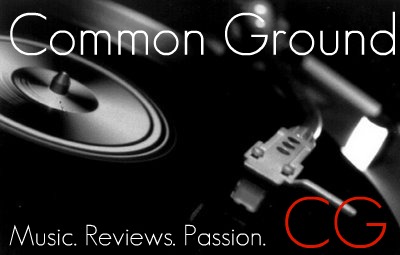Yes, I realize this review comes quite a bit after the release of "21." Yet, Adele's enormous success and recent launch of a North American tour renders Adele still very much relevant.
A slightly different version of this review appeared on The Arts Fuse.
By: Michela Smith
A recipient of two 2009 Grammy’s (and three additional nods) for her debut album, 19, Adele drowned the meager wheezes of Katy Perry, Pink, and Leona Lewis to fill the halls of the music industry with her resonating voice. Critics hailed Adele as refreshingly different, a return to the soul & style of Carnaby St. – far preferable to dreary Top 40.
I tuned into the 2011 Brit Awards in February to hear a sample from her sophomore album 21 and can report that her stunning performance of “Someone Like You” left both the home audience and Adele herself in tears after her broken heart determinately fought for a second chance. Yet, upon hearing all of 21, my heart began to break as well, but not because of Adele’s ability to translate emotion. Far too many of the songs – in fact, half of the albums tracks -- sound like Katy Perry and Pink and Leona Lewis.
Adele puzzles me.
But to begin positively…21’s strongest pieces are those that ironically stray from her award-winning formula of intense heartbreak.
21 opens with unquestionably its best: “Rolling in the Deep.” Punctuating Adele’s silence since 19, a quick-moving, heavily-thumbed guitar line begins, setting metronome-like time for the piece. Adding contrast, the swirls of Adele’s voice enter and swim through the auditory space. The song soon layers, adding bass drum, piano, lead guitar, and Supremes-like backing vocals to paint Adele’s infuriation with an ex-lover she plans to overwhelm in a rage of revenge. Cultured Adele reveals her classical training too, including quintessential blues allusions like “roll your stone” and “reap just what you sow.” This recall of Mississippi Delta ghosts, combined with Adele’s smooth vocals that leech venom, render the track sumptuously addictive.
The same percussive momentum continues into the following “Rumour Has It,” a track set to the time of a throbbing floor tom-tom mixed with cool, snipey “ooh’s”, reminiscent of 1960s. This time, Adele harnesses an even darker side, shamelessly alluring her flame to leave his proper lover. Adele and her accompanying piano are seductively vindictive, reminding her beau not only of her superior lovemaking, but also how she’s “cold to the core,” tantalizing both her lover and the audience to join her sinful indulgence.
Melodramatic... |
It is at this point that the album begins its decline. “Turning Tables” is a melodramatic declaration in which Adele promises to leave behind a lover who continues to trifle with her affections. While the subject matter itself is moving, Adele’s treatment is not. The piano and strings weep slowly, weighed down with their oversaturated emotion – sentimentality that’s been done before. They lyrics aren’t particularly innovative either. Lines like “Under your thumb, I can't breathe” are not only derivative, but their generality doesn’t translate the emotion Adele hopes to and causes the reader to pray for a quick table turn to the next track.
“Turning Tables” sounds remarkably close to “The X-Factor” product Leona Lewis’ “Run” and unfortunately, the echoes of Top 40 on 21 continue. “He Won’t Go” sludges along in monotony to a J-Lo-like pop beat. “Take It All” fuses Christina Aguilera and Alicia Keyes with a solo piano occasionally accompanied by a gospel voices that chime in on unimaginative lyrics like “How can you walk away from all my tears?” “Lovesong” melts into a bossnova that could appear as any Aguilera or Shakira B-Side and is only slightly redeemed in its background hint of organ, an instrument rarely featured in Top 40. “Set Fire to the Rain” combines all of these influences, creating the most generic pop song on the album. Recognition of the unoriginality of these songs is not meant to suggest plagiarism, but rather an inability to escape the pressures of the mainstream.
Adele: Whhhyyy? Critics hailed you as a beacon of originality, someone to move us away from repetitive Top 40! I didn’t think seeing all those pop stars at Staples Center in 2009 would be so intimidating… Adele – you puzzle me!
Adele Still Reigns Supreme. |
Yet, this disappointing imitation shrinks in the shadow of the album’s closer, “Someone Like You.” Accompanied by only a piano, Adele’s respiratory system seemingly inflates on this track, dragging anguish out of the depths of herself to purge her body of her sadness. While the track is an acknowledgment that her past love has happily moved onto another, she literally begs him not to forget her, an agonizing appeal to hear. Despite her range on this track, Adele’s vocals are intimate, envelop the listener in misery, and seemingly encourage an impromptu duet to mourn past lovers together – which usually happens…
The emotion Adele summons in “Someone Like You”, amplified even further in her Brit Awards performance, reassures tactful listeners that her reign as 2009 Best New Artist over dispassionate Top 40 artists isn’t over. Yet, her slip to the mainstream on 21 is evidence she’ll have to fight to avoid that world; perhaps this means choosing a producer other than Columbia Records co-president Rick Rubin who mixed 21. Until then, even with this recent dimming, Mademoiselle Adele’s beacon of originality will continue to twinkle and Adele herself will remain a puzzle.
A Note:
Michela recommends 21 (Bonus Tracks) over the widely-released 21 reviewed here on ArtsFuse. 21 (Bonus Tracks) features five additional tracks which Michela finds makes the album far superior to the original release.
Overall Grade: 7.5



